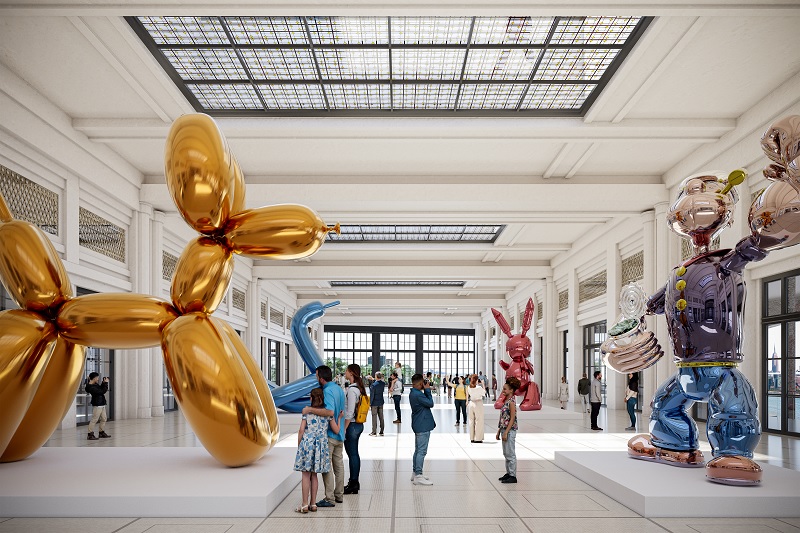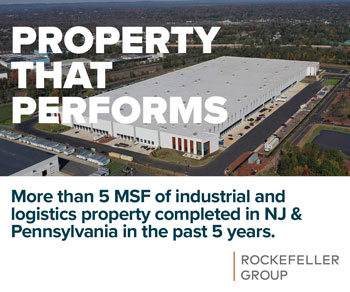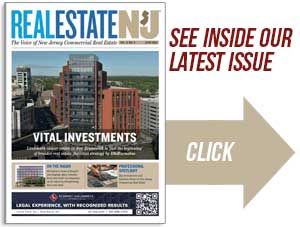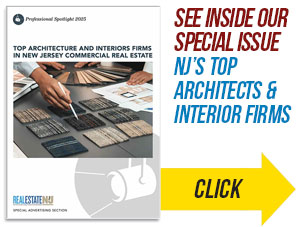Hoboken’s historic ferry terminal includes a vacant 50,000-square-foot concourse on the second floor, where LCOR envisions uses such as event space, galleries and performance venues, among other concepts, as part of the mixed-use Hoboken Connect project. — All images courtesy: LCOR
By Joshua Burd
The nearly 60,000 commuters that passed through Hoboken Terminal on a typical, pre-COVID weekday likely did so “at lightning speed,” as Brian Barry describes it. It’s also likely that very few, if any, knew of the vast, dormant spaces tucked behind the ferry slips, including a 50,000-square-foot, second-floor concourse overlooking the Hudson River.
Those spaces are now poised to be reborn and reawakened after more than five decades of lying vacant and virtually unused, in what could be the centerpiece of a long-awaited, high-profile plan to transform the terminal and several underused parcels nearby. LCOR, which is NJ Transit’s master developer at the site, envisions uses such as event space, market-style retail and other concepts that would help achieve one of the project’s main goals — creating a focal point for the public while enhancing the commuter experience.

“What this can become is a destination,” said Barry, a senior vice president with LCOR. “And right now it’s just about people moving through to wherever they’re going, but we can create something here that pulls people to the waterfront.”
It’s a vital but perhaps overlooked piece of a project that is more than 15 years in the making, one that also calls for a new 635,000-square-foot office tower, nearly 400 apartments, open space and upgrades to transit infrastructure. With the proposal now moving forward, LCOR could break ground as soon as next year on what it hopes will be a series of concurrent public- and private-sector improvements to create what’s known as Hoboken Connect.
That includes the prospect of reviving a historic, Beaux-Arts-style ferry terminal building “that you could not replicate or build today with a phenomenal opportunity to experience the waterfront and the history and the significance of this place,” Barry said.

“It’s the flashiest piece (of the project), for sure,” he said, “because, while we’ll build beautiful buildings, this has character, it has something that new construction doesn’t necessarily offer that has a unique feel that we’re going to try to bring back to life.”
Located in southeast Hoboken, the terminal dates back to 1907. Ferry service operated from the facility for 60 years before being discontinued due to declining demand, according to NJ Transit, but restored in 1989 at a temporary site at the southern end of the building. As a result, most of the two-story structure overlooking the ferry slips has been unused for decades, Barry said, but for a private event or two and a shoot for an Eric Clapton music video.
That’s especially evident on the building’s lower level, where debris is strewn across the floor of a dank, dimly lit space that is walled off from the adjacent plaza and the ferry boarding areas. But the plan by LCOR and NJ Transit would open the space to the public and replace those walls with glass storefronts along the eastern and western sides of the building, infusing it with natural light and with pedestrians that currently bypass the structure.
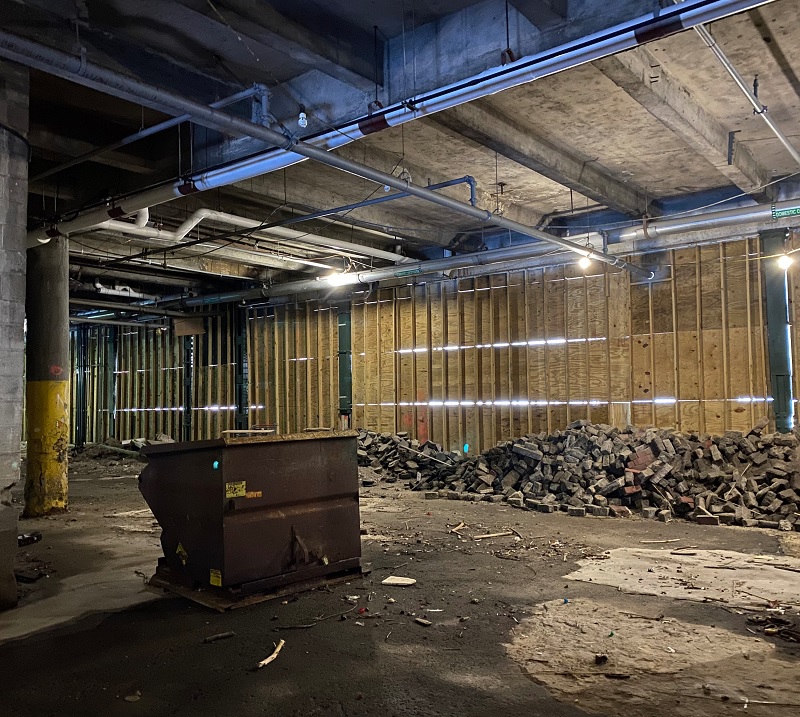
“From a historic preservation component, this obviously has been completely forgotten about,” Barry said, noting that the 16,000-square-foot space could house something of a market or food hall concept. He added: “The bar is pretty low right now, but it will really change what this entire space and waterfront has to offer to folks.”
The project also calls for elevating the floor level to about seven feet above sea level, both inside and outside the building, in order to prevent what Barry describes as nuisance flooding from the Hudson River. It’s among several planned improvements for Warrington Plaza, which is directly west of the ferry building and serves as the entrance to the main rail terminal. He noted that the plaza’s low point is about three feet above sea level, notably lower than some of the surrounding streets, creating a sort of catch basin after heavy rain events.
Other upgrades to the plaza would include seating, green space and infrastructure that would help with resiliency and draw additional visitors to the site.
“We can’t stop the Hudson with this project,” Barry said, describing that as an issue that requires a more regional solution, but “barring any major storm event, all of this can become usable 365 days a year (and) … create a usable space that is commuter- and resident-focused.”
The ground floor is a far cry from the ferry terminal’s second level, which is both impressive and inviting despite its obvious wear and tear and lack of upkeep. With 21-foot ceiling heights and a large, column-less floorplate stretching nearly 500 feet, the space has all the makings of a unique destination for commuters, city residents and visitors, which LCOR and NJ Transit hope to create as part of the Hoboken Connect project.
They would do so with a new glass wall at the northern end of the terminal, providing additional light and views as far as the George Washington Bridge. The team would also renovate the space to highlight the original Tiffany skylights, moldings and other historic design elements, helping to “transform the experience here into something that should be celebrated, considering the significance of the space and how unique it is.”
“They don’t make space like this anymore,” Barry said. “It’s pretty spectacular.”

LCOR is still gathering feedback as to the exact use of the second-floor concourse, post-renovation, but is committed to something that “delivers the impact that it should have.”
“We keep coming back to event space in some capacity,” Barry said. “It is public transit property, it should be celebrated more broadly by a large contingent of people, and what that could be is an array of end uses, whether it’s permanent or temporary.”
He added that the floor is big enough to bifurcate, allowing for multiple functions that could also include gallery, entertainment or studio space, among others.
LCOR hopes to begin preliminary work at the site later this year, as it enters the final stage of an entitlement process that involves a host of city and state agencies. The company in late May secured approval for an amended redevelopment plan, seeking to advance a long-stalled project that has grappled with concerns about its design, scale and need for resiliency measures. The developer and NJ Transit have also had to coordinate with a long list of public entities at the historic multimodal property, but took a key step last summer when it unveiled a team of design, construction and leasing professionals for the project.
The project marked another key milestone last week when Hoboken’s city council approved a redevelopment agreement with LCOR.
The current plan, which has been scaled down from earlier proposals, now includes a CetraRuddy-designed, 389-unit apartment building on Observer Highway — across from the Bloomfield and Washington Street intersections — with 20 percent of the homes designated for lower-income renters. Barry noted that the site has a narrow footprint to account for the terminal’s operational needs, circulation and the preservation of view corridors to Jersey City, but still provides considerable density and the chance to create new ground-floor retail space.
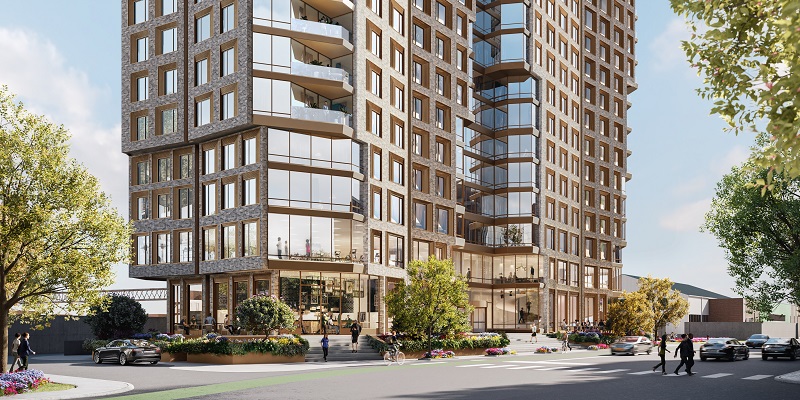
The residential phase will also allow LCOR to start ground-up construction sooner rather than later, as the market for luxury apartments remains strong.
“The goal is, at any point in time throughout the process, that there’s private development and public infrastructure being moved simultaneously,” he said, adding that the team has spent considerable time crafting a “well-thought-out and comprehensive logistics and phasing plan” to ensure a streamlined development schedule that does not drag on.
Hoboken Connect also calls for a 20-story, 635,000-square-foot office tower at the corner of Hudson Street and Hudson Place, with retail space, at the site of what’s now a parking lot and an abandoned building near the PATH entrance. Aside from its obvious location near an iconic transit hub with direct access to Manhattan, LCOR will be pitching tenants on the prospect of a true post-COVID workplace, with modern building systems and an abundance of outdoor space.
“The world is still going to settle on what ‘back to work’ means,” Barry said. “I think we have another 12 months before we really all figure that out, but … those are the things that tenants are focused on in a post-COVID environment, and we have an opportunity to offer that blank slate for them, for both the physical structure itself and then what we’re trying to do at grade.”

The developer and its Cushman & Wakefield leasing team will first look to “get the project back on everyone’s radar” before the launch of a formal marketing campaign, he said, following years of uncertainty and changes to the overall site plan.
“Part of the process is undoing all of that history in some regards,” Barry said, noting that LCOR would look to prelease 45 to 50 percent of the building before breaking ground. So far, it has assembled a sizable list of companies that are actively looking for space on the waterfront or may be reconsidering their footprints in Manhattan.
As Barry noted, Hoboken Connect is advancing thanks in part to its many stakeholders now embracing the vision in its entirety, rather than focusing on their individual needs.
“We got there and we’ve had a lot of success in collaborating with Transit over the last two years with the amendment and the initiatives we’ve been advancing,” he said. “It goes before that, but it’s where we really started making concrete progress.”
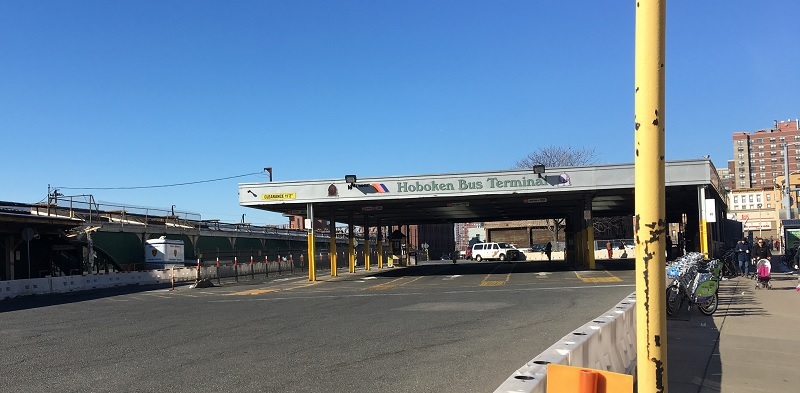
A place for people
The long-awaited mixed-use project known as Hoboken Connect will bring major upgrades to much of the exterior space and infrastructure around Hoboken Terminal. That includes rethinking Warrington Plaza to ensure that it’s “more about the movement of people and bicycles than it is about parking and cars,” as it currently is, while still accounting for NJ Transit’s operational needs, life safety and the needs of nearby businesses.
New dedicated seating and walkways will help achieve those goals, LCOR’s Brian Barry said, as will a new bike lane that starts at the Hudson River and runs for several blocks. The developer also plans to enhance the bus terminal that is fed by Observer Highway, creating a roundabout that will eliminate the need for slow, awkward K-turns by the massive vehicles.
“It’s really about people at the end of the day,” Barry said. “While there is some level of traffic congestion, the main mode of transportation moving through here is by foot, so that’s really who should be the focus and celebrated as part of this process.”

